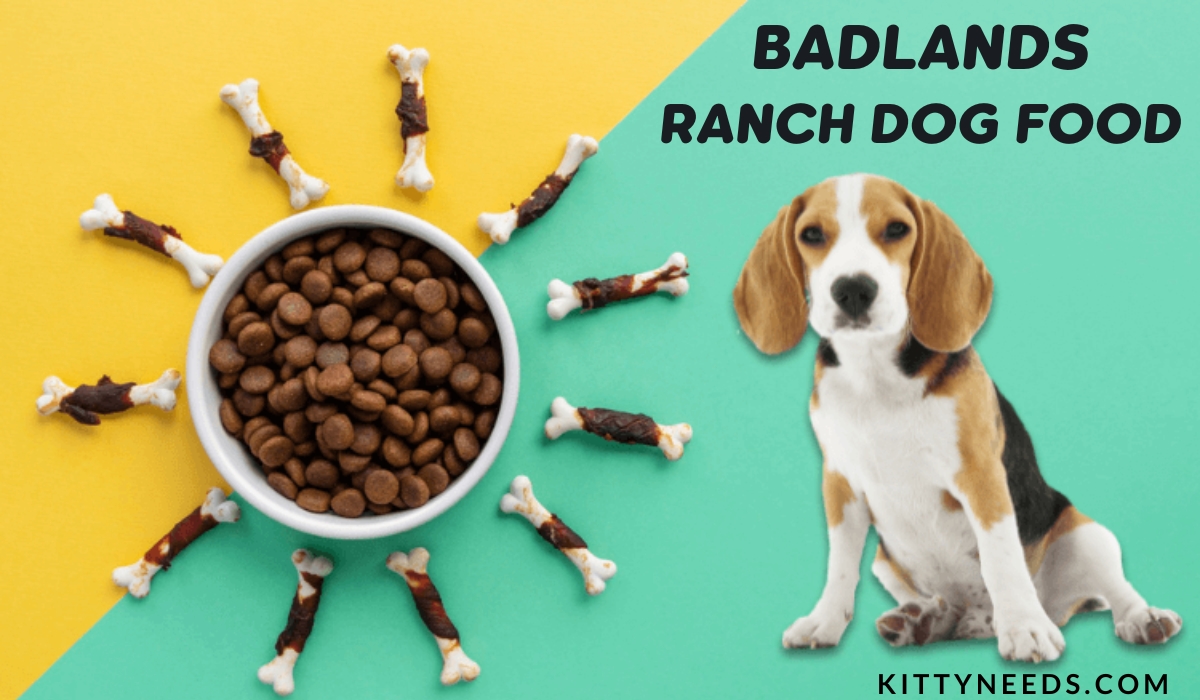Pet Care Guides
Give a Loving Home: Adopt a Pet, Change a Life with Pet finder

Pet finder
In a world where love, companionship, and unconditional loyalty are highly cherished attributes, perhaps no creature embodies these qualities more explicitly than pets. Each year, millions of abandoned or lost pets find their way into animal shelters, hoping for a second chance at life, waiting for a hero to bring them into their homes. Yet, despite the well-documented mutual benefits of pet ownership and the growing number of adoptable pets, the joy of adoption remains underappreciated by many. This post aims to change that by taking a deep dive into why and how you can “adopt, don’t shop” from Petfinder – a platform dedicated to connecting potential pet parents with an array of animals in need.
The Rewards of Adoption
Adopting a pet is a life-altering experience, both for the human and the animal involved. The rewards are abundant, ranging from the immediate emotional gratification of giving a furry (or feathered, or scaled) friend a loving home to the long-term health benefits for you as a pet owner. Studies have shown that the companionship of animals can increase fitness, lower stress, and simply bring immense joy to everyday life.
Dispelling Myths
One significant barrier to pet adoption is the persistence of myths surrounding shelter animals. It’s time to debunk the misconceptions that suggest shelter pets are less healthy or behaviorally challenged. In reality, shelters offer a diverse selection of pets, including well-behaved animals and those with specific health needs that caring pet owners can address.
Find Your Perfect Match
Thanks to the technology and advanced online platforms like Petfinder, finding the perfect companion is easier and more rewarding than ever before. You can utilize a host of search filters to tailor your pet search, ensuring that you’re not just finding a pet, but your pet – the one that fits seamlessly into your life and heart.
The Petfinder Search Tool
The search functionality offered by Petfinder is not only robust but also designed to simplify the process. Whether you’re looking for a specific breed, age, size, or have special circumstances regarding allergens or pet behavior, Petfinder’s tools make the search a breeze.
Browse by Shelter/Rescue
Petfinder‘s partnership with numerous shelters and rescues worldwide means you have unparalleled access to the most diverse pool of pets. This section will guide readers on how to use the platform to locate nearby shelters and the types of animals they can expect to find.
The Adoption Process
People often worry about the complexity of pet adoption, from the application to bringing the pet home. However, the process is straightforward, and Petfinder’s built-in resources assist with every step.
General Steps
Walk readers through the adoption process, highlighting that it generally involves filling out an application, meeting the pet, and paying an adoption fee. The thoroughness of shelters and rescues in this process is an assurance for both the pet’s welfare and the adoption’s suitability.
Resources
Link to Petfinder’s dedicated page, which breaks down the adoption process further, addressing common questions and providing a clear overview of what prospective pet owners can expect.
Success Stories
Nothing can drive the message home like a real-life success story. Here, we will highlight specific pets who found their loving homes through Petfinder and now enjoy happy and fulfilled lives.
Showcase Heartwarming Stories
Sharing success stories of pet adoptions brings the heartwarming nature of the process to life, offering an emotional connection to potential adopters. Photos and vignettes of these pets with their new families can reinforce the connection between the value of adoption and the joy it brings.
Testimonials
Incorporate firsthand accounts from adopters, offering insights into their experiences with the adoption process and how it has positively affected their lives. These quotes can come from a variety of adopters – from first-time pet owners to seasoned lovers of animals.
Get Involved
Adoption isn’t the only way to make a difference in the lives of shelter pets. This section will provide a comprehensive guide to getting involved with shelters and rescues, even if you’re unable to adopt at this time.
Volunteering and Fostering
Explore the various ways readers can offer their time, from walking dogs to fostering pets in need of a temporary home. Detail the application processes for these opportunities and the kinds of roles available.
Donations
An explanation of the different kinds of donations that shelters and rescues rely on, from monetary contributions to in-kind support. The section should also include direct links to organizations’ donation pages and explain how donations are used to support animals.
Conclusion
The post must conclude with a powerful and actionable message that encourages readers to act. This can be through an emotional appeal to consider adoption, straightforward calls to volunteer or donate, or an invitation to join the Petfinder community.
Call to Action
Whether it’s using the search tools to find your new companion or showing your support in other ways, the call to action will provide clear steps on how to take the next step in helping an animal in need. This could be adopting, fostering, volunteering, or making a donation.
Contact Information and Links
Complete the piece with contact information for Petfinder and relevant shelters and rescues, directing readers exactly where to go to move forward with their new pet search or to support the cause. Include social media links for sharing the post and spreading the message.
By leveraging the emotional appeal of pet adoption and the practical tools Petfinder provides, this comprehensive guide aims to inspire a wave of pet adoptions and support for animal shelters and rescues. Give a loving home, adopt a pet, and truly change a life.
YOU MAY ALSO LIKE
Here’s Why Nationwide Pet Insurance Should Be on Your Radar
Frequently Asked Questions (FAQs)
Below are some of the most searched FAQs on Google regarding pet adoption through services like Petfinder, along with their answers:
- Is it better to adopt a pet from a shelter or buy one from a breeder?
Adopting a pet from a shelter is often considered more beneficial as it provides a home to an animal in need. Additionally, adoption from shelters contributes to combating the overpopulation of pets and can be more cost-effective than purchasing a pet from a breeder.
- What are the costs involved in adopting a pet from a shelter?
The adoption fee from a shelter typically covers spaying/neutering, first vaccinations, and microchipping. The costs can vary widely, usually ranging from $50 to $250, depending on the shelter and the type of pet.
- How long does the pet adoption process take?
The duration of the adoption process can vary. It might take as little as a few days or as long as a few weeks. The timeframe generally includes submitting an application, having a meet-and-greet with the pet, and completing any required paperwork.
- Can I find purebred pets at shelters?
Yes, shelters and rescues often have purebred pets available for adoption. In fact, it’s estimated that up to 25% of pets in shelters are purebred. Using search filters on platforms like Petfinder can help potential pet owners find specific breeds.
- What should I consider before adopting a pet?
Before adopting a pet, consider your lifestyle, the size of your living space, the amount of time you can dedicate to a pet, and any allergies among household members. It’s crucial to ensure that you’re ready for the commitment of pet ownership, which can last many years.
Pet Care Guides
Badlands Ranch Dog Food: A Healthier Choice for Your Pet and the Planet

The love affair we share with our four-legged friends is unparalleled. They’re our walking companions, our confidants, and often, our closest family members. Knowing this, we strive to provide them with the best care possible. Most pet owners are aware that diet plays a crucial role in a dog’s overall health, but the sea of options in the pet food aisle can be overwhelming. This is where Badlands Ranch Dog Food steps in – echoing its tagline, “From Our Ranch to Your Pooch”, it’s more than a product; it’s a lifestyle.
Badlands Ranch Dog Food doesn’t just offer a healthier alternative to standard dog food; it presents a promise to enhance the lives of both our canine companions and the environment. Made with a combination of sound nutritional science and ethical sourcing, this brand champions sustainability while ensuring that every bite your pup takes is brimming with the goodness they need to live a vital life. In this deep-dive post, we’ll explore how Badlands Ranch Dog Food stands out in the world of pet nutrition, and why it may be the right choice for your beloved pet.
The Philosophy Behind Badlands Ranch Dog Food
Badlands Ranch Dog Food is a testament to the belief that feeding our pets should not just be about sustenance but also about integrity. With a commitment to crafting pet food that is free from harmful additives, antibiotics, and artificial ingredients, this brand offers pet owners the peace of mind that they are making a responsible choice.
The Heigl Foundation Connection
At the heart of Badlands Ranch Dog Food’s philosophy is the work of the Jason Debus Heigl Foundation, a non-profit organization co-founded by actress Katherine Heigl, known for her roles in “Grey’s Anatomy” and “27 Dresses.” Named after her late brother and dedicated to animal welfare, the foundation’s impact is a driving force behind the Badlands Ranch brand. Katherine Heigl’s dedication to the well-being of animals doesn’t stop at the silver screen; it permeates through the ethos of the products she endorses.
The Brand’s Commitment to Clean Ingredients
Badlands Ranch Dog Food is a proud ambassador of what’s absent just as much as what’s present in your dog’s bowl. Their formulas are free from common allergens and potential toxicants, making it a reliable choice for pet owners who want to steer clear of ingredients like corn, wheat, and soy.
The Significance of “Badlands Ranch”
The name itself invokes a sense of purpose and scale — a vast expanse of land where the principles of sustainability and care for the environment are as rich as the nutrients found in its dog food. For Badlands Ranch, it’s not just about providing an exceptional diet for your pet; it’s about ensuring that the planet they inherit is a green and bountiful one.
Product Highlights
Badlands Ranch’s product line stands as a testament to its philosophy, and their Superfood Complete formula is a beacon of nutrition for our furry friends. This carefully curated blend takes the guesswork out of feeding your dog.
Superfood Complete Formula
The Superfood Complete formula is packed with quality, bioavailable nutrients. Imagine all the essentials of a premium dog diet condensed into a serving of robust, flavorful kibble. It’s a well-rounded diet that doesn’t shy away from the necessary—a thoughtfully calibrated meal that promises to deliver vitality in every bowl.
Air-Dried for Superior Quality
Air-drying has been praised for its ability to preserve nutrients without the use of extreme temperatures. The result is palatable to your dog and easy on their digestive system. Not to mention, the reduced need for preservatives aligns with Badlands Ranch’s commitment to a clean product.
Key Ingredients and Nutritional Components
When you skim the back of a bag of Badlands Ranch Dog Food, you won’t find jargon — just key ingredients with a straightforward delivery of what’s inside. Responsibly-raised beef, nutrient-dense organ meat, and omega-packed salmon are just the tip of the iceberg. Each ingredient is carefully selected to contribute to a dog’s overall well-being.
Health Benefits
A shiny coat, robust energy, and a gleeful bounce in your dog’s step — the promises of good health are the highlights of what sets Badlands Ranch Dog Food apart in the dog food market.
Skincare and Coat Health
The Superfood Complete formula boasts essential fatty acids and biotin, which are instrumental in maintaining healthy skin and a luxurious coat. The days of itchy spots and dull fur could very well be behind your dog once Badlands Ranch becomes a staple in their diet.
Digestion and Immune Function
A hefty dose of dietary fiber, along with prebiotics and probiotics, is encapsulated in every serving to support gastrointestinal health and boost the immune system. With digestive health at its peak, your dog is better equipped to fight off illness and absorb the nutrients they need to thrive.
Sustained Energy
The right balance of protein and complex carbohydrates means that the energy from your dog’s diet is not just immediate, but also extends to a sustained pace. Your canine athlete, or even the household couch potato, reaps the rewards of consistent, dependable energy levels.
Customer Reviews and Testimonials
The best accolades come from the consumers themselves. Reviews and testimonials of Badlands Ranch Dog Food paint a picture of satisfaction and transformation, one bowl at a time.
Pawsome Transformations
From stories of dogs’ allergy recoveries to those about senior dogs regaining their vitality, the impact of Badlands Ranch Dog Food is profound. The personal accounts of pet owners reflect a pattern of health revival and contentment in their dogs.
Verified Customer Feedback
Verified feedback from a cross-section of dog owners underscores the brand’s commitment to quality and service. The positive sentiments are not just about the food; they extend to the thoughtful customer experience the brand offers.
Making a Difference
For every bag of Badlands Ranch Dog Food purchased, pet owners become a part of a larger narrative — one that champions animal welfare and seeks to make the world a more compassionate place.
Supporting Animal Welfare
The brand’s dedication to ending animal cruelty is not just a noble intention; it’s a commitment backed by action. Badlands Ranch Dog Food allocates a portion of its sales to the Jason Debus Heigl Foundation, ensuring that the circle of care extends beyond your dog to animals around the globe.
The Bigger Picture
Choosing Badlands Ranch Dog Food is opting for a healthier planet. The responsible sourcing and sustainable practices adopted by the brand are testimony to its mission of making a positive environmental impact.
YOU MAY ALSO LIKE
Finding the Perfect Pet Shop: A Guide to “Pet Shop Terdekat”
Conclusion: A Commitment to Quality and Compassion
Badlands Ranch Dog Food goes beyond the cliché of a pet food commercial; it’s grounded in real-world action. The brand’s dedication to providing wholesome nutrition is paralleled by its devotion to animal welfare and the environment. It’s a dog food that feeds the stomach and the soul, embodying the values we want to share with our pets.
For pet owners who see their dog as not just a companion but a family member, the choice of pet food is a choice of care. It’s a ripple effect that starts with the well-being of our pets and extends to the greater ecosystem. Badlands Ranch Dog Food is not only a natural choice for those invested in their pet’s nutrition, but it’s also a responsible choice that echoes the way we want to live in harmony with the world.
Join the bandwagon of conscious pet parenting. Make a switch to Badlands Ranch Dog Food, and together, let’s feed a new narrative for our pets and our planet.
Frequently Asked Questions
1. What Makes Badlands Ranch Dog Food Different?
Badlands Ranch Dog Food distinguishes itself with its air-dried technique, preserving the integrity of its nutrient-rich ingredients and promoting better digestibility for dogs.
2. Is the Superfood Complete Formula Suitable for All Dog Breeds?
Yes, the Superfood Complete formula is designed to meet the nutritional needs of all dog breeds, ensuring a balanced diet for your canine companion, regardless of size or breed.
3. Can Badlands Ranch Dog Food Improve My Dog’s Coat Health?
Absolutely, the inclusion of essential fatty acids and biotin in the formula supports a healthy, shiny coat and can alleviate issues like itchy spots and dull fur.
4. How Does Badlands Ranch Support Animal Welfare?
A portion of every sale is donated to the Jason Debus Heigl Foundation, aiding in the fight against animal cruelty and supporting animal welfare initiatives.
5. Where Can I Purchase Badlands Ranch Dog Food?
Badlands Ranch Dog Food is available through their official website and select retail stores. Check their website for more details on how to purchase.
Pet Care Guides
The Definitive Guide to Rimadyl Carprofen Dogs: Uses, Dosage, and Safety

If your furry friend has been diagnosed with a health condition that requires pain management or anti-inflammatory treatment, you might have encountered the term “Rimadyl.” This widely prescribed medication is a nonsteroidal anti-inflammatory drug (NSAID) specifically designed for dogs. Like other NSAIDs, Rimadyl provides dogs relief from symptoms associated with several health issues while carrying its own set of risks and benefits. This comprehensive guide will walk dog owners and lovers through Rimadyl’s uses, safe administration, potential side effects, and alternatives.
Understanding Rimadyl Carprofen Dogs
Rimadyl, which contains the active ingredient carprofen, has been part of the veterinarian’s toolbox for years. It effectively reduces pain and inflammation in dogs, often associated with conditions such as arthritis, hip dysplasia, or postoperative discomfort. Carprofen is preferred by veterinarians due to its proven effectiveness and safety profile when used responsibly.
Why Rimadyl is Administered to Dogs
Rimadyl is typically employed to alleviate pain linked to chronic or acute conditions. Its anti-inflammatory properties make it especially useful for treating:
- Osteoarthritis
- Postoperative pain
- Musculoskeletal disorders
In cases of arthritis or dysplasia, where a dog’s discomfort can be chronic and debilitating, Rimadyl can significantly improve their quality of life. Importantly, it’s used under the guidance of a veterinarian and should be just one aspect of a comprehensive care plan that might also include physical therapy, weight management, and, in some cases, alternative or supplementary treatments.
Navigating the Uses of Rimadyl for Dogs
Rimadyl effectively manages pain and swelling, offering relief to dogs with a wide range of conditions. Here’s a deeper look at how it serves our four-legged companions.
Pain Management in Dogs
Pain can be a complex and challenging issue to manage in dogs, especially when chronic. Rimadyl is successful in reducing pain by inhibiting the production of prostaglandins – chemicals in the body that cause swelling and pain. Whether it’s helping a senior dog move with more ease or aiding a recovering pup after surgery, Rimadyl plays a crucial role in canine comfort.
Therapeutic Applications of Rimadyl
Rimadyl’s therapeutic applications vary widely. It’s not limited to a specific type of pain but rather the underlying cause, often tying back to inflammation. Here are the conditions Rimadyl can help treat:
Arthritis in Dogs
Arthritis is a common ailment in dogs, particularly in older animals. Symptoms of arthritis include stiffness, lameness, and a reluctance to perform activities that were once routine. Rimadyl can significantly reduce the inflammation and pain associated with this condition, promoting better mobility and an improved overall condition.
Postoperative Discomfort
After surgery, dogs experience varying degrees of pain and inflammation. Rimadyl can be administered during the recovery period to keep these symptoms in check, allowing the healing process to continue as comfortably as possible.
Musculoskeletal Pain
Injuries and overuse can lead to musculoskeletal pain. Rimadyl offers relief in such cases, making it easier for dogs to rest and aid recovery.
Ensuring Rimadyl Safety for Your Canine Companion
It’s essential for dog owners to understand that every medication, including Rimadyl, carries potential risks alongside its benefits. Safety is a critical component of using Rimadyl, as NSAIDs can impact the gastrointestinal tract, kidneys, and liver if not used properly.
Why Rimadyl is Considered Safe for Dogs
When administered correctly, Rimadyl is considered safe for use in dogs. It’s been extensively studied and has proven safer in terms of side effects compared to older generation NSAIDs. Manufacturers have also developed a chewable form, making it user-friendly and non-threatening to a dog during administration.
Administration Trust and Techniques
The correct administration of Rimadyl is important to ensure efficacy and safety. This includes:
- Always following the veterinarian’s dosing instructions to the letter
- Ensuring the medication is given with food to reduce the likelihood of gastrointestinal upset
- Storing Rimadyl safely, out of your dog’s reach and in its original container to protect it from contamination
Peering into the Potential Side Effects of Rimadyl
Rimadyl can have side effects, ranging from minor to severe. Dog owners should be aware of these potential reactions and notify their veterinarian if they observe any concerning changes in their pet’s behavior or health.
Common Side Effects of Rimadyl in Dogs
The following are the most commonly observed side effects that are typically mild and temporary:
- Vomiting
- Diarrhea
- Loss of appetite
- Lethargy
A vigilant owner can manage many of these issues at home by offering clear liquids, a bland diet, and plenty of rest. However, if symptoms persist or are severe, a veterinarian should be consulted.
Identifying and Addressing Serious Side Effects
While less common, serious side effects may occur, necessitating immediate veterinary attention. These include:
- Liver or kidney problems, which may manifest as changes in urination, thirst, or appetite
- Gastrointestinal bleeding, indicated by black, tarry stools
- Changes in behavior, disorientation, or aggression
- Seizures
In case of serious side effects, it’s crucial to contact a veterinarian right away.
Exploring Alternatives to Rimadyl for Dogs
While Rimadyl is generally well-tolerated, there are instances where a dog may have an adverse reaction or cannot take it due to a pre-existing condition or interaction with another medication. In such cases, there are alternative treatment options available.
Seeking the Right Alternative Medication
In the event that Rimadyl does not suit your dog, there are several potential alternatives. These could include switching to a different NSAID, a more suitable dosage, or exploring non-NSAID pain relievers, such as opioid medications. It’s important to consult a veterinarian to discuss the best choice for your pet’s specific health needs.
Considering Holistic and Non-Medication Solutions
Some dog owners prefer to pursue holistic or non-medication solutions for their pet’s pain management. Options like acupuncture, chiropractic care, and herbal supplements can be valuable, particularly for dogs that cannot tolerate medications. While these are often viewed as supplementary therapies, they can sometimes provide enough relief to reduce or eliminate the need for stronger medication like Rimadyl.
Beyond Medication: A Holistic Approach to Your Dog’s Health
Medication, including Rimadyl, should be viewed as just one part of your dog’s overall health plan. A holistic approach that addresses diet, exercise, and alternative therapies can enhance your dog’s well-being.
The Role of Nutrition and Weight Management
Proper nutrition plays a crucial role in managing chronic conditions like arthritis. Weight management is equally important since excess weight can exacerbate joint pain. Consult your veterinarian to design a diet plan that supports your dog’s specific health needs.
Exercise and Physical Therapy
Regular, gentle exercise can strengthen muscles and improve joint function. In some cases, physical therapy can be an effective addition to treatment, providing pain relief and improving mobility.
Stress Reduction and Quality of Life
Stress can worsen pain perception. Ensuring your dog’s emotional well-being and providing a comfortable, nurturing environment can help reduce stress levels, a critical component in managing chronic pain.
Preparing for Your Dog’s Rimadyl Treatment
Before starting your dog on Rimadyl, there are several steps to take to ensure a smooth and safe treatment plan.
Veterinary Examination and Diagnosis
Always seek out a professional veterinary examination and obtain a clear diagnosis for your dog’s symptoms before initiating Rimadyl treatment. This will ensure that the medication is used appropriately and that any underlying conditions are addressed.
Understanding Dosage and Frequency
Your veterinarian will determine the right dosage and frequency of Rimadyl administration for your dog based on their weight, health status, and the condition being treated. Do not adjust the dosage without consulting your veterinarian.
Follow-Up and Monitoring
Regular follow-up appointments with your veterinarian are important to monitor your dog’s response to Rimadyl and to check for any developing side effects. Additionally, be sure to inform your vet about any other medications or supplements your dog is taking as they might interact with Rimadyl.
YOU MAY ALSO LIKE
Understanding and Managing Pancreatitis in Dogs
Conclusion
Rimadyl is an invaluable tool in the care of dogs suffering from pain and inflammation. When used with care, it can significantly improve their quality of life. However, it’s not a one-size-fits-all solution, and responsible pet ownership requires an understanding of the medication and its effects. Always work with your veterinarian to customize a treatment plan that is safe and effective for your dog, taking into account their individual needs and health history. Remember, the best approach is always the informed and cautious one when it comes to your beloved canine companion.
Frequently Asked Questions (FAQs)
What are the most common side effects of Rimadyl in dogs?
The most commonly observed side effects of Rimadyl in dogs include vomiting, diarrhea, loss of appetite, and lethargy. These side effects are typically mild and temporary, but if they persist or are severe, it’s important to consult a veterinarian.
Can Rimadyl cause serious side effects in dogs?
Yes, while less common, Rimadyl can cause serious side effects in dogs, such as liver or kidney problems, gastrointestinal bleeding, changes in behavior, and seizures. If any of these serious side effects are observed, contact a veterinarian immediately.
Are there any alternatives to Rimadyl for managing pain in dogs?
Yes, there are alternatives to Rimadyl for managing pain in dogs. These include different NSAIDs, more suitable dosages, non-NSAID pain relievers like opioid medications, and holistic or non-medication solutions such as acupuncture, chiropractic care, and herbal supplements. Always consult a veterinarian to find the best option for your pet.
What role does diet and exercise play in managing a dog’s chronic pain?
Proper nutrition and weight management play crucial roles in managing chronic conditions like arthritis in dogs. Excess weight can exacerbate joint pain, so maintaining a healthy weight is essential. Regular, gentle exercise and possibly physical therapy can strengthen muscles, improve joint function, and provide pain relief.
How should I prepare for my dog’s Rimadyl treatment?
Before starting Rimadyl treatment, ensure your dog has a professional veterinary examination and a clear diagnosis. Understand the prescribed dosage and frequency, and do not adjust the dosage without consulting your veterinarian. Regular follow-up appointments are important to monitor your dog’s response to the medication and check for any developing side effects.
Pet Care Guides
Understanding and Managing Pancreatitis in Dogs

Pancreatitis is an inflammatory condition of the pancreas, an organ vital to digestion and regulation of blood sugar in dogs. It’s a serious health concern that can lead to life-threatening complications. In this in-depth exploration, we’ll not only define pancreatitis and its severity in dogs, but also explain its causes, clinical signs, diagnosis, treatment, and — perhaps most importantly for pet owners — ways to prevent the onset of this disease.
The Pancreas and Its Enzymes
The pancreas is a gland located near the stomach that serves two main functions in the body; it produces digestive enzymes, which aid in breaking down food, and it produces insulin to regulate blood sugar levels. Pancreatitis occurs when the enzymes intended for digestion instead become activated within the pancreas, causing the organ to become inflamed.
The two primary digestive enzymes produced by the pancreas are lipase, which breaks down fats, and amylase, which helps digest carbohydrates. When the pancreas becomes inflamed, these enzymes leak into the surrounding pancreatic tissues, leading to autodigestion — where the pancreas essentially digests itself. This process is painful for your pet and can have serious health consequences.
Recognizing Pancreatitis in Dogs
Pancreatitis can be acute — meaning it comes on suddenly and severely — or chronic, characterized by recurring flare-ups of less intense symptoms. Some causes of pancreatitis are commonly recognized, such as dietary indiscretion, where dogs may ingest a large amount of fatty foods like bacon or steak. Other causes are more complex and can include genetic predispositions, certain drugs, infections, and other diseases.
The clinical signs can vary but often include:
- Acute abdominal pain
- Vomiting or nausea
- Lack of appetite
- Lethargy
- Dehydration
- Fever
If you notice any of these symptoms in your dog, especially if they have a history of dietary delicacies, it’s crucial to seek veterinary assistance promptly. Early intervention can significantly impact the prognosis of pancreatitis.
Diagnosing Pancreatitis
Diagnosing pancreatitis can be challenging because its symptoms can mimic those of other diseases. Veterinarians rely on a variety of diagnostic tools, such as blood tests to look for elevated pancreatic enzymes, and imaging, including X-rays and ultrasound, to visualize the pancreas and surrounding area. Sometimes multiple tests are necessary to detect pancreatic inflammation accurately.
Treating Pancreatitis
Treatment for pancreatitis is typically focused on managing symptoms and addressing the underlying causes. Pancreatitis can be painful, so pain management is a crucial aspect of treatment. Additionally, because vomiting is often a symptom, dogs may need to be kept without food or water for a period of time to allow the pancreas to rest.
Supportive care plays a significant role in treatment, with hydration through intravenous fluids being a common first step. Once your dog is stable, dietary management may be employed — initially with no food, then gradually incorporating a bland diet, and finally moving back to a regular feeding schedule.
In cases where an underlying cause is determined, such as an infection or liver disease, treatment of that condition will also be necessary to prevent pancreatitis from recurring.
Prognosis and Recurrence
The prognosis for a dog with pancreatitis can vary widely depending on the severity of the condition and how quickly treatment was provided. For some, it may be a one-time event, while for others, it can develop into a chronic condition requiring long-term management. Recurrence is always a risk, so pet owners should remain vigilant for any signs that the pancreatitis may be returning.
Prevention Strategies
Preventing pancreatitis in dogs largely involves managing their diet and lifestyle.
Dietary Management
Avoid feeding your dog table scraps, particularly those high in fat. Make sure you’re selecting a high-quality, balanced diet that meets their nutritional needs, but doesn’t overload their system with too much fat at once.
Healthy Weight Management
Obesity is a known risk factor for pancreatitis, so maintaining a healthy weight through proper diet and regular exercise can play a significant role in prevention.
Medication Caution
Be cautious with medications that have the potential to cause pancreatitis. Always follow dosing instructions carefully, and don’t hesitate to ask your veterinarian about any potential side effects or risks associated with medications.
YOU MAY ALSO LIKE
Here’s Why Nationwide Pet Insurance Should Be on Your Radar
Conclusion
Pancreatitis is a serious condition that requires prompt veterinary care. By understanding the signs and symptoms of pancreatitis, learning its causes, and implementing preventative measures, dog owners can better protect their furry companions. If you suspect that your dog may be suffering from pancreatitis, it’s important to seek veterinary advice as soon as possible to ensure their health and well-being.
FAQs
What are the first signs of pancreatitis in dogs?
The earliest signs of pancreatitis in dogs often include acute abdominal pain, vomiting or nausea, lack of appetite, lethargy, and possibly dehydration or fever. These symptoms can vary in intensity but generally indicate that immediate veterinary attention is needed.
Can a dog recover from pancreatitis?
Yes, many dogs can recover from pancreatitis with proper veterinary treatment and care. The prognosis depends on the severity of the condition, whether it’s acute or chronic, and how quickly treatment is administered. Some dogs may experience a one-time event, while others may have recurrent episodes requiring ongoing management.
What foods can cause pancreatitis in dogs?
Foods high in fat, like bacon, steak, or other table scraps, are known to cause pancreatitis in dogs. It’s essential to avoid feeding your dog fatty foods and stick to a well-balanced diet that’s appropriate for their health needs to prevent pancreatitis.
How is pancreatitis diagnosed in dogs?
Diagnosing pancreatitis in dogs involves a combination of clinical signs, blood tests to measure pancreatic enzyme levels, and imaging tests such as X-rays or ultrasound to visualize the pancreas and surrounding area. Because symptoms of pancreatitis can mimic other conditions, sometimes multiple tests are necessary for an accurate diagnosis.
Can pancreatitis in dogs be prevented?
While not all cases of pancreatitis can be prevented, reducing the risk is possible by managing your dog’s diet to avoid high-fat foods, maintaining a healthy weight through regular exercise, and exercising caution with medications that could provoke pancreatitis. Always consult with your veterinarian for guidance on preventing pancreatitis in your pet based on their specific health needs and risks.
-

 Pets and Animals4 months ago
Pets and Animals4 months agoShovel Dog: Everything You Need to Know
-

 Pets and Animals4 months ago
Pets and Animals4 months agoHow To Trim Dog Nails: A Step-by-Step Guide for Painless Pups and Peace of Mind
-

 Pets and Animals4 months ago
Pets and Animals4 months agoBlack Beauty: Unveiling the Alluring Pitbull Dog Black
-

 Pets and Animals4 months ago
Pets and Animals4 months agoBubonic Plague case oregon cat: A Modern Tale of Medieval Disease
-

 Pet Care Guides4 months ago
Pet Care Guides4 months agoHere’s Why Nationwide Pet Insurance Should Be on Your Radar
-

 Pets and Animals4 months ago
Pets and Animals4 months agoHow Often Do You Take A Cat to the Vet? A Guide for Caring Owners
-

 Other4 months ago
Other4 months agoHow to Hello kitty drawing: A Step-by-Step Guide for Fans of All Ages
-

 Pets and Animals4 months ago
Pets and Animals4 months agoWhat is Qxefv? A Complete Guide to Caring for Your Exotic Companion
